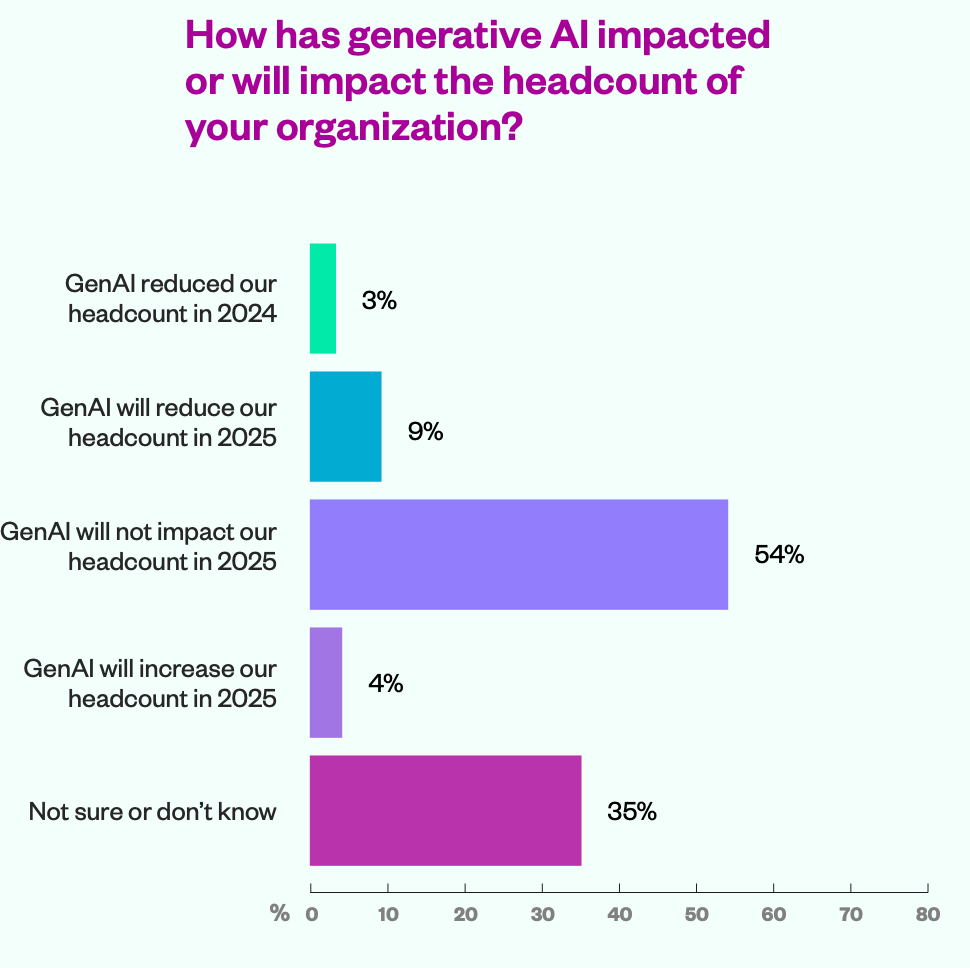RDEL #99: How has AI impacted engineering leadership in 2025?
Findings from the 2025 LeadDev Engineering Leadership Report show that leadership practices are evolving even as early productivity gains are modest.
Welcome back to Research-Driven Engineering Leadership. Each week, we pose an interesting topic in engineering leadership, and apply the latest research in the field to drive to an answer.
The past year has seen generative AI move from prototype to production. Engineering teams are shipping AI-powered features, adopting coding assistants, and rethinking how software gets built. But for all the change on the ground, the big question remains: how has AI impacted engineering leadership and the team in 2025?
The context
Over the last decade, engineering leadership has been reshaped by trends like remote work, continuous delivery, and the drive toward platform engineering. But generative AI introduces something fundamentally different: tools that don’t just assist engineers, but perform parts of their work.
In 2023 and 2024, generative AI surged into engineering workflows. As adoption expanded, however, a more nuanced picture started to emerge. Productivity gains were not always consistent or easy to measure. Teams approached integration in different ways, with varying levels of success. Engineering leaders found themselves navigating a mix of experimentation, expectations, and risk—working to understand where AI could offer real value, and where it might introduce new complexity.
What started as a tooling evolution has increasingly become a leadership challenge, requiring thoughtful strategies around change management, team enablement, and long-term quality.
The research
The 2025 Engineering Leadership Report surveyed 617 engineering leaders between March 14–27, 2025, across a range of geographies, roles, and company sizes. The study captured numerous findings across AI, engineering leadership challenges, job security, and diversity, but for the purposes of this RDEL we’re focusing only on the AI findings.
Among its findings, the report dedicates a section to the real-world impact of AI adoption in engineering orgs—including its influence on productivity, priorities, headcount, and sentiment.
Key findings include:
60% of engineering leaders said AI has not significantly boosted team productivity so far. While 39% reported slight improvements (1–10%), only 6% saw gains above 30%, and 21% saw no benefit or even a decline.
54% of respondents said AI will not impact headcount in 2025. Despite media narratives around job displacement, most leaders do not expect AI to reduce team size this year.
Coding assistants are the most common use case for AI: 47% use AI for code generation, 45% for refactoring, and 44% for documentation.
AI tooling continues to be the top area for investing or changing suppliers, as teams keep an eye on the evolving landscape. Engineering leaders are also looking at different suppliers to measure and improve overall engineering performance, as new tools provide better ways to measure and drive productivity improvements.
51% of leaders believe AI will have a negative long-term impact on the industry. Top concerns include code maintainability (49%) and the impact on junior developers entering the field (54%).
The application
The data suggests that while AI adoption is widespread, its transformative impact on productivity hasn’t materialized… yet. Most teams report only modest gains, and many leaders are still working through the operational and cultural implications. This doesn’t mean the long-term promise of AI won’t be realized—but it does mean that engineering leaders need to stay grounded in the realities of today’s workflows, team dynamics, and infrastructure constraints.
Here’s how leaders can stay focused and effective in the current landscape:
Anchor AI investments in real, measurable problems.
Focus on areas where AI can streamline existing pain points—like documentation, testing, or internal support—rather than adding tool complexity in ways that don’t necessarily add value. Understanding the org’s primary pain points, and how AI is being adopted across those pain points, can create natural opportunities to drive meaningful productivity improvements.
Treat AI adoption as an organizational change, not just a tooling choice.
Adoption succeeds when teams have clear guidance, psychological safety to experiment, and shared expectations about how AI fits into their workflow.
Create space for continuous learning and hands-on exploration.
With AI tools evolving rapidly, engineers need regular opportunities to experiment, build new skills, and stay current. Encouraging curiosity and structured exploration will help teams adapt as the technology—and its impact on workflows—continues to shift.
—
Have a great week, and happy Research Tuesday!
Lizzie








I read as many of these as I can! Thanks!